
|

|

Interested in how people relate to space, she played complex
games of hide-and -seek, depicting herself fading into a flat plane - becoming the wall under the wallpaper, part of the floor,
or sealed behind glass, constantly contrasting the fragility and vulnerability of her own body with the strength of the objects
around her. Her body becomes an expressive tool which mingles with the other objects she chooses to photograph; gloves, eels,
sheets, mirrors, fireplaces and flowers. Fascinated by limits and boundaries, Woodman's work conjures the precarious moment
between adolescence and adulthood; between existence and the ultimate disappearance, death.
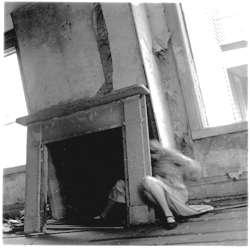
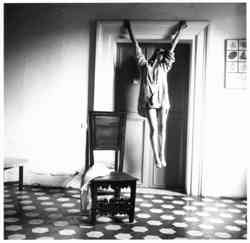
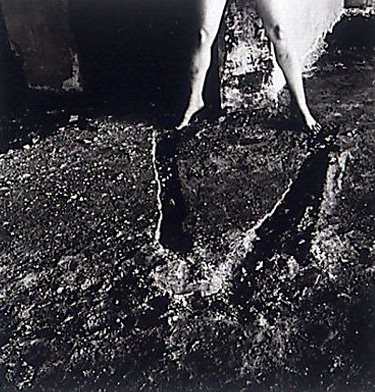
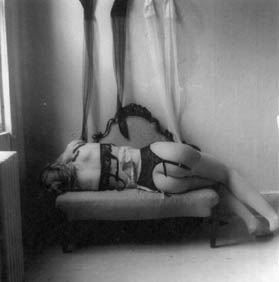
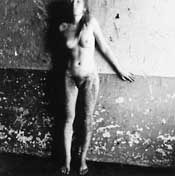
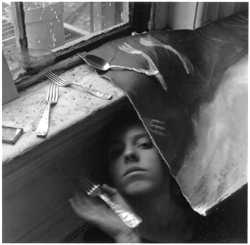
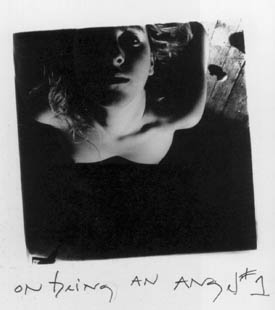
|

|

|

|

|

|
Born in Denver in 1958, Woodman was brought up in a family
of artists. She studied at Rhode Island School of Design between 1975 and 1979 and spent a year in Rome on a scholarship.
This was an extraordinarily creative period in which she was influenced by the classicism, sensuality and decay of Rome and
she exhibited her photographs for the first time in the basement of the Maldoror bookshop-gallery. On her return to America
she moved to New York.
Woodman brought an understanding of symbolism, the Baroque,
Surrealism and Futurism to her haunting, sensual, and occasionally, violent self-portraits. Her work is unusual in photography.
It does not attempt to capture a suspended moment but instead shows us the elusiveness of time. Frequently, it contains elements
of performance - she usually photographs herself in motion, often reduced to a blur.

Francesca Woodman designed several books of her own
photographs. The only one of her books to be published came out in January 1981, at which date she took her own life. When
Woodman leaped from the window of a building on the Lower East Side of Manhattan in 1981, she left behind the makings of a
myth. But she also left behind images of an extraordinary internal life. Ultimately, it is the quality of that internal life,
rather than the manner in which it ended, that illuminates Woodman's work.
"My life at this point is like very
old coffee-cup sediment and I would rather die young leaving various accomplishments . . . instead of pell-mell erasing all
of these delicate things . . . "
Woodman was photographer and model, subject and object,
at the same time.
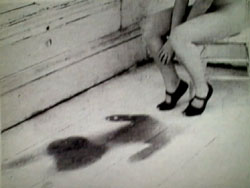
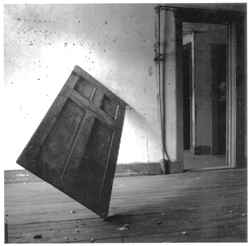
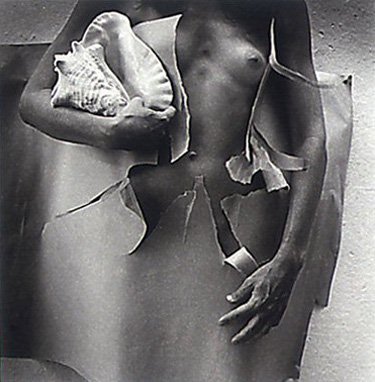
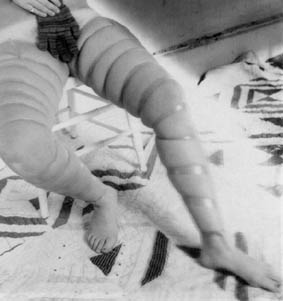
|

|

|

